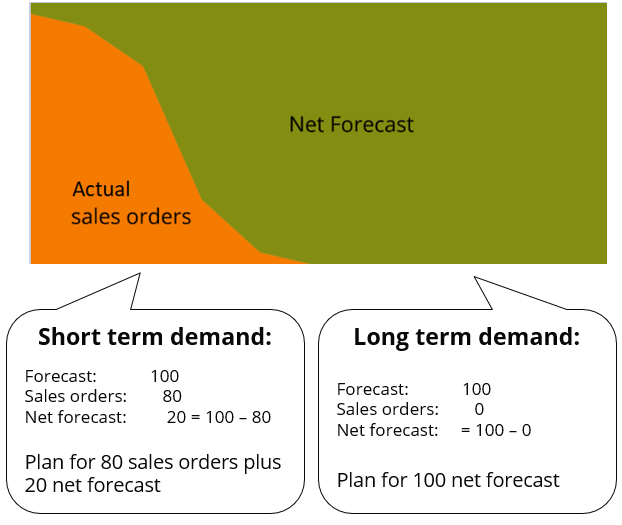Understanding forecasting consumption
In this article we’ll quickly introduce you to the concept of “forecast consumption” (or “forecast netting“). In a few minutes you’ll understand its role in your planning processes.
Customer demand in your supply chain comes in two forms:
- Sales orders you already have received from your customers.
- Sales forecasts that are a prediction of the customer orders you expect to sell in a certain period
The importance of each form varies by business. For instance, a grocery shop will plan its replenishments only based on a forecast. An engineer-to-order company will plan only the customer project orders it received.
Many companies operate with a mix of sales orders and forecasts. The short term demand consists mainly or enterily of sales orders. Long term demand consists mainly of forecast. For some period both forecast and sales orders will coexist and this is where forecast consumption comes into the picture.

The need for forecast consumption is obvious when you look at the short term period in the above picture.
- Let’s follow a time bucket 6 months in the future.
- That far in the future the demand consists of only forecast of 100.
This demand will already trigger the procurement of raw materials and components that have a long lead time of 5 or 6 months. - Three months go by, and our time bucket is now only 3 months in the future.
In the mean time we received sales orders for 20 pieces already.
The plan we generate now is based on 20 sales orders plus 80 net forecast.
This demand will trigger the procurement of raw materials and components that have a lead time of 3 or 4 months. - Another three months pass, and our time bucket is now in the current month.
We have received sales orders for 90 pieces.
The plan we generate now is based on 90 sales orders plus 10 net forecast.
This demand will now trigger the procurement of raw materials and components that have a lead time less than a month.
Sounds easy and logical, but it’s the concept of forecast consumption that allows us to plan consistently and smoothly across this whole horizon, across a mix of different demand types and different lead times.